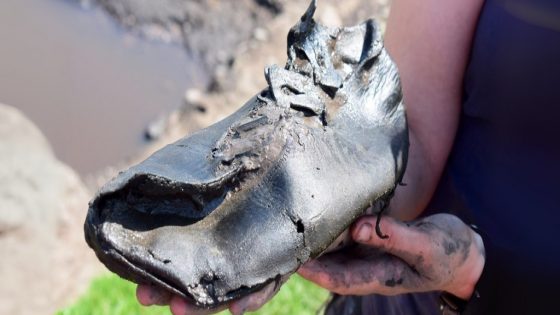A recent discovery of “unusually large” 2,000-year-old shoes at a Roman site in northern England has captivated archaeologists and history enthusiasts alike. Unearthed by the Vindolanda Charity Trust, these remarkable finds prompt intriguing questions about the past, particularly regarding the size of the footwear and its implications for the Roman Empire. As reported on 2025-07-04 05:32:00, the shoes measure over 30 centimeters (11.8 inches) long, equivalent to a European size 49 or a US size 15.
- Discovery of large 2,000-year-old shoes
- Shoes found at Magna Roman Fort
- Archaeologists puzzled by size distribution
- Vindolanda Trust's excavation efforts
- Unique soil conditions preserved artifacts
- Diverse cultures in the Roman Empire
The excavation at the Magna Roman Fort in Northumberland revealed eight of these oversized shoes, typically found in a defensive ditch used as a rubbish dump. Rachel Frame, a senior archaeologist on the project, noted that only a small fraction of shoes from the Vindolanda collection match this size, raising questions about the soldiers stationed there. What does this mean for our understanding of Roman military history?
This unusual find prompts us to consider who these large-footed individuals were and why they were stationed at this specific site. The implications of such discoveries can reshape our understanding of Roman society and its far-reaching influence. Key points include:
- The shoes suggest a diverse population within the Roman military.
- Only a small percentage of similar-sized shoes have been found elsewhere.
- Understanding the context of these shoes could reveal insights into trade and cultural exchange in the empire.
As researchers delve deeper into the history behind these large shoes, we are reminded of the vastness of the Roman Empire. What other secrets might be waiting to be uncovered at this historical site?































